Footprint Vs Biodiversity
A country ecological footprint is a measure of how many renewable resources it uses to feed and support its citizens. These resources can come from around the world—a country’s ecological footprint can exceed its own country’s capacity if it’s using resources that are taken from other countries. And if we look at the last 40 years, while wealthier country’s ecological footprints have risen drastically—implying that they are using more ecological resources than before—their biodiversity (as measured by the Living Planet Index) has increased. At the same time, the biodiversity of poorer countries using more resources at the expense of the less-well off?
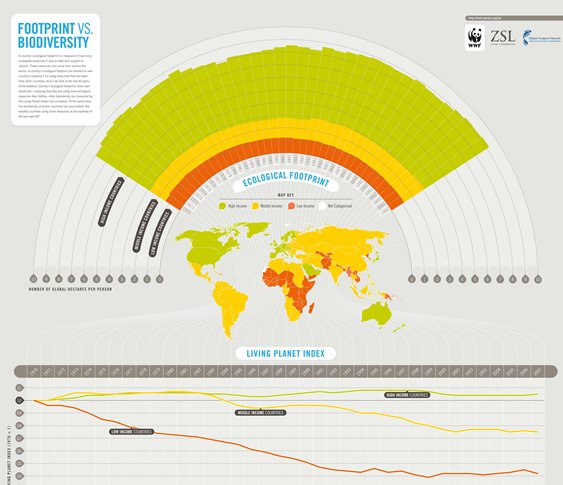 Source: panda
Source: panda
Ground Water: An Endangered Resource
The region is using great Lakes groundwater faster than nature can replenish it. We all have a responsibility to protect and conserve our waters not for a single interest, but for our families, wildlife and the future. We can all take steps now to protect our groundwater resources and help keep the Great Lakes healthy forever.
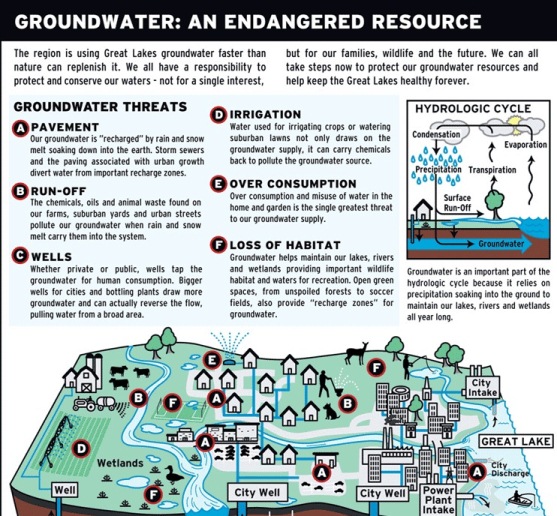 Source: biodiversityproject
Source: biodiversityproject
Coral Triangle Marine Turtles & their Protection Status
Long before humans appeared in the Coral Triangle, marine turtles were already swimming the region’s seas and laying eggs on its beaches. These iconic species are not only crucial links in the Coral Triangle’s ecosystems, they also attract visitors from all around the world.
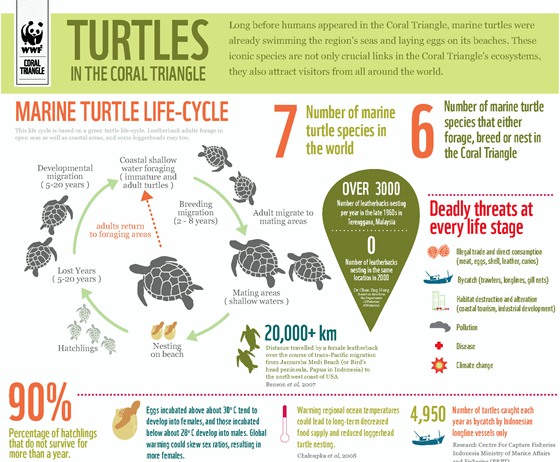 Source: panda
Source: panda
Endangered Species – Top 20 Countries
About 900 species of plants and animals have gone extinct in the last five centuries, and more than 10,000 others are now on the verge of joining them. Here’s a look at some of the countries with the greatest potential for both disaster and improvement.
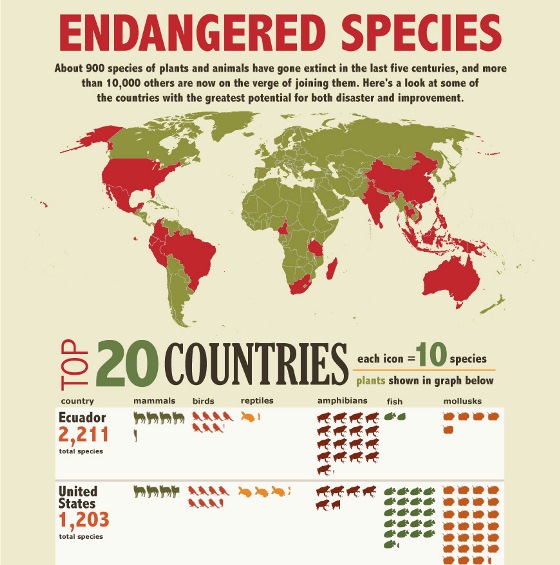 Source: mnn
Source: mnn
How we’re Endangering Animals
Humans affect climate change by adding greenhouse gasses to the atmosphere, which raise the planet’s temperature, consequently melting ice caps, raising sea levels and warming oceans. Climate change also creates droughts, which threaten animals’ food and fresh water sources. The largest man-made contributions to climate change come from running factories and power plants, heating and cooling homes, and driving automobiles.
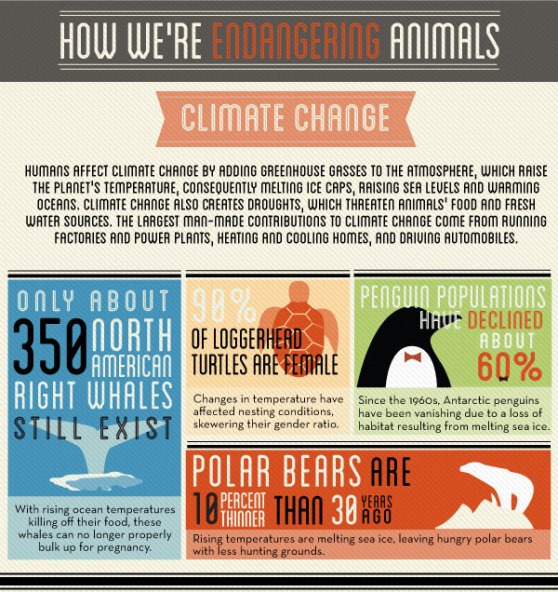 Source: certificationmap
Source: certificationmap

